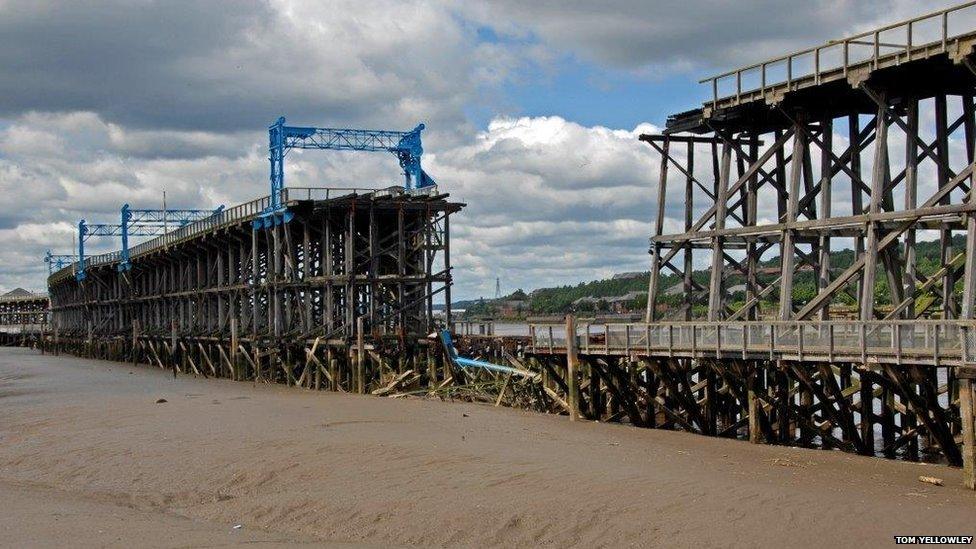Dunston Staiths: A symbol of the past fighting for its future
- Published
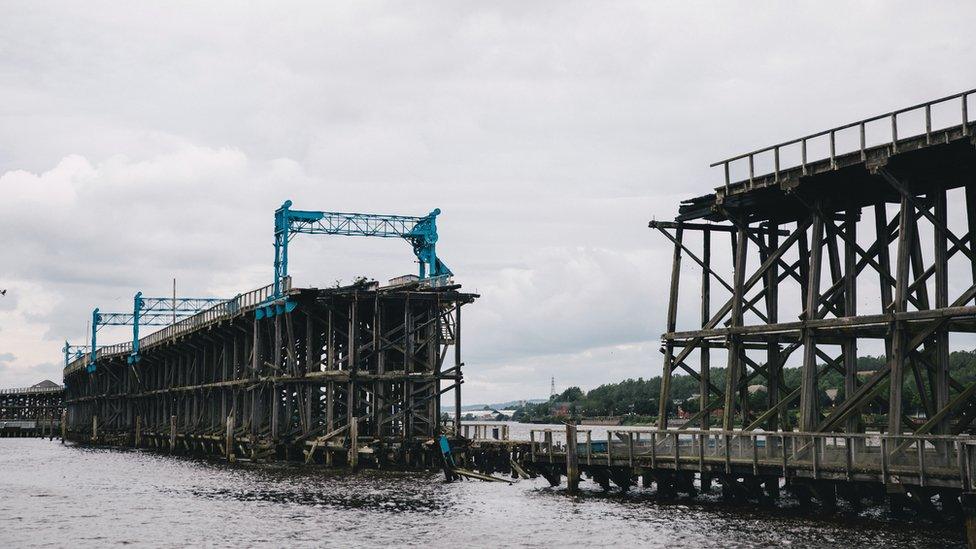
A 50m section of the structure was destroyed in an arson attack in 2003
Dunston Staiths is a pier-like runway that was used to tip millions of tons of coal into the cargo holds of the huge ships on the River Tyne below.
Once among 30 such edifices along the river in the days when the north east of England supplied coal to the world, today it is a poignant symbol of the heavy industry that once sustained the region - the sole survivor of a bygone age.
At more than 500m (1,650ft) in length, it is reputedly the largest timber structure in Europe and has stood by the Tyne since the 1890s, surviving both the decline of mining and repeated arson attacks.
However, the future of Dunston Staiths remains far from certain. Could a new partnership with the National Trust offer salvation?

Coal would be tipped into a ship's hold after being transported along the staiths by rail
With the loss of heavy industry, Dunston - the birthplace of football star Paul Gascoigne and AC/DC rocker Brian Johnson - is no longer the thriving hub of old, and the wooden structure looks almost forlornly towards the long-since rejuvenated quayside less than a mile away.
There, the vast flour mill in which hundreds toiled daily has been transformed into the Baltic Centre for Contemporary Art while alongside sits the gleaming curved glass of the Sir Norman Foster-designed Sage Gateshead music centre.
Supporters hope the staiths could mine a similar seam of success, even though the way ahead looks far from easy.
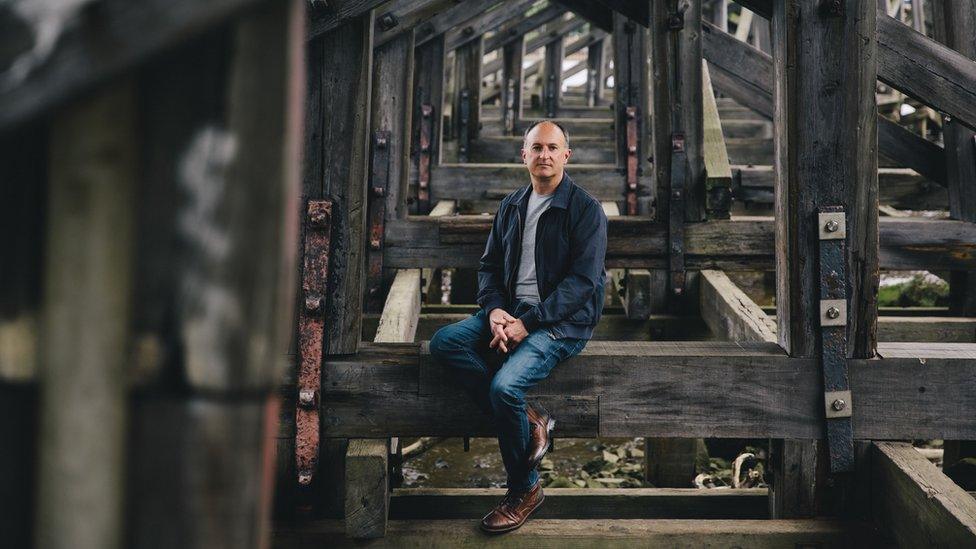
Andrew Smith is one of a number of volunteers with the Friends of Dunston Staiths action group
"You just think 'Oh no, not again'," says Andrew Smith of the Friends of Dunston Staiths action group, external, who watched with dread when the latest blaze took hold seven weeks ago.
"You could see how big the fire was. The timber was so dry.
"The emergency crews did an incredible job. It's still upright, but it's certainly not safe enough to open for access without repairs being done."
After its working life drew to a close in the late 1970s, a repeating cycle of repair and ruin has seen the structure languish on Historic England's Heritage-at-Risk register, external.
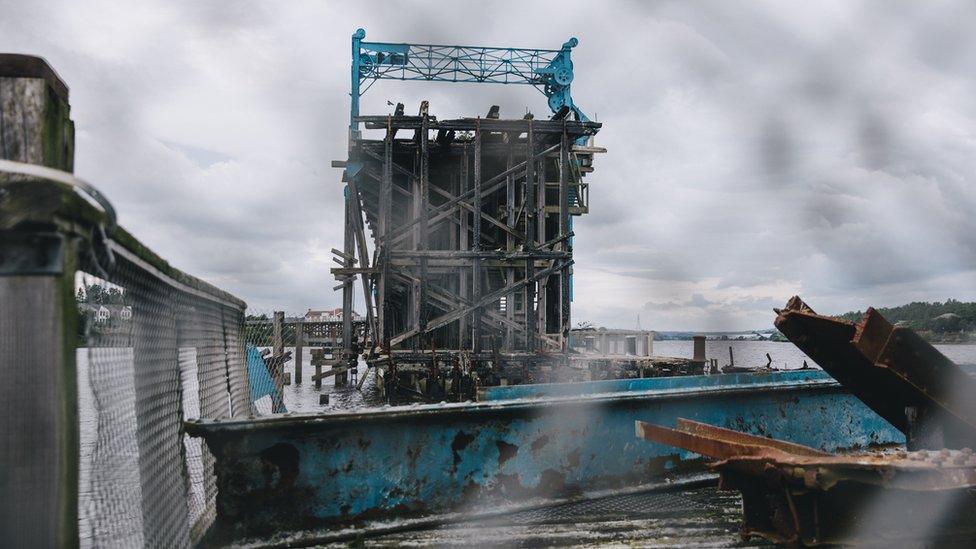
Restoration costs are well above the Friends' annual fundraising efforts
Partly restored ahead of the 1990 National Garden Festival staged on the adjoining land, a fierce blaze in 2003 tore away a large section, which remains absent today.
A further arson attack followed in 2010 and the two most recent - last year and this May - undid much of the good work resulting from a £1m refurbishment completed in 2015 that had enabled its western section to be opened from April to September for heritage days, a food market and dog show.
Replacing the charred hardwood damaged over the past 18 months alone could cost £250,000, engineers estimate, while millions would be required to rebuild the missing stretch.
It is, Mr Smith admits, "a hard structure to fully secure".
"There are also restrictions that come with it being a listed structure. Whatever you do you have to be sympathetic to that. We are trying to ensure it is as resilient as we can make it within the budget constraints we have."

Much of the ageing timber on the Grade-II listed building needs to be replaced

Kari Vickers, of the Tyne and Wear Building Preservation Trust, says the structure is a reminder of how important the mining industry used to be
For the charity gifted the staiths in the 1990s, its cultural value is beyond question and finding ways to generate revenue for repairs and restoration is paramount.
"Much of the region was built by the coal industry," explains Kari Vickers, deputy manager of the Tyne and Wear Building Preservation Trust (TWBPT). "It was instrumental in the development of the towns and cities and it's a part of so many families' lives.
"It's been wiped out and the infrastructure knocked down, but this is a reminder and it's in such a great spot on the river.
"We don't charge people to go on the staiths [during the open days] because we want them to be accessible to everybody, but the food markets aren't going to cover massive repair bills.
"You can let it rot - and it would become unsafe - or you can try to fix it.
"The idea is to turn it into an urban pier, but that alone doesn't bring funds in. A strategy is needed - how can it make money?"
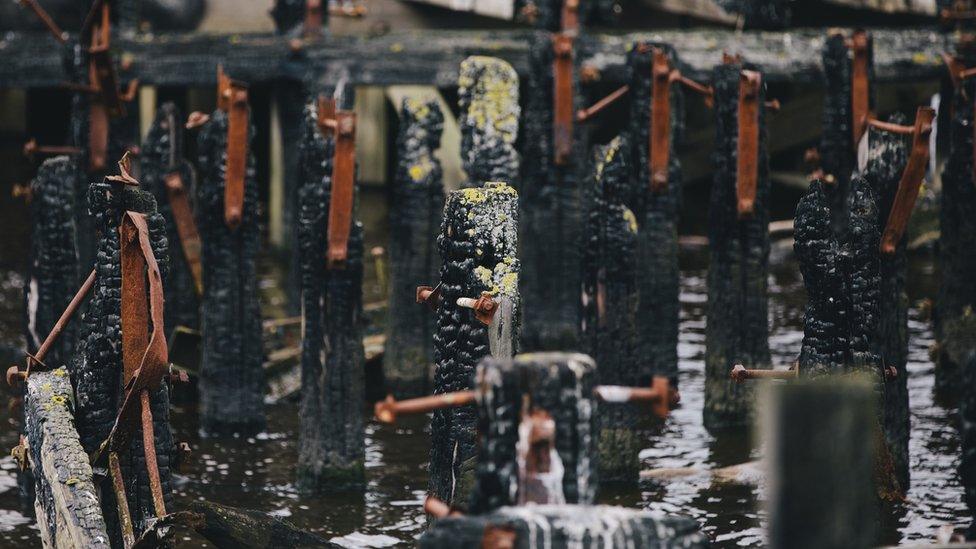
These charred remnants are a reminder of the devastating arson attacks

Birds and other forms of wildlife have made a home on and around the structure
Creating a jetty for river tours and installing camping "pods" on the decking are two ideas under consideration, along with solar panels to generate energy which could then be sold to the National Grid.
The issue is complicated by the structure's limited opening season as during winter months roosting grey herons, golden plovers and lapwings lay claim to the site's mudflats.
Fresh hope has come from a recently announced partnership with the National Trust. The conservation group is teaming up with the TWBPT and Friends of Dunston Staiths to establish what it describes as a "sustainable future" for the structure.
Inspiration is being taken from its endeavours at the landscaped gardens and 18th Century properties of the nearby Gibside estate as well as from its work at South Tyneside's Souter Lighthouse.
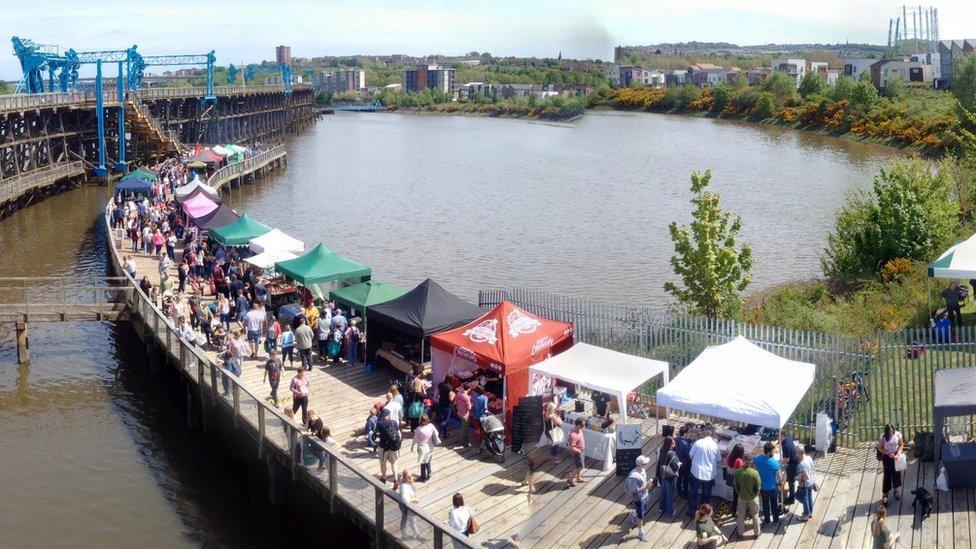
Food markets on the restored lower deck in spring and summer attract hundreds of visitors
"We've been incredibly successful at Gibside by looking at what local people want and need," says Robyn Brown, the National Trust's assistant director of operations in the North.
"The village didn't have a pub so we opened one, and we looked at what families want from days out and introduced children's activities.
"Souter Lighthouse has also been a brilliant partnership where people are getting active by playing games, walking and cycling. If we put something on that gets people closer to nature, it's well received.
"At the staiths, it's about increasing what people can see and do. Everything is in the mix. We could widen the cycle offering and we'd like to work with the existing nature conservation teams and support them with our rangers.
"Pop-ups are a possibility. Could we have a climbing platform? There's a lovely cafe there so can we work on things with them? We want to test some ideas and assumptions over the next 12-15 months and create an offering that brings people back again and again".
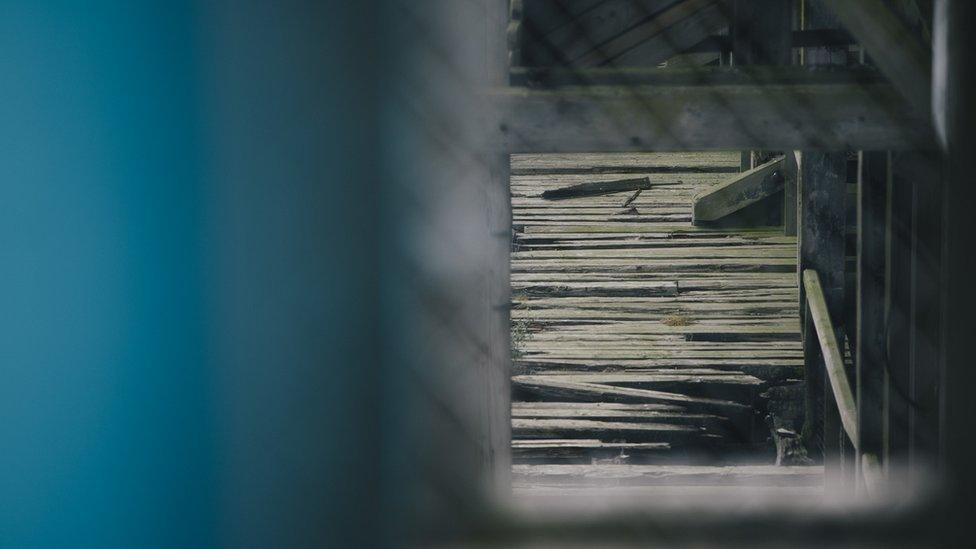
Each hardwood panel is expensive to replace and the new decking must come from a sustainable source
For Mr Smith, the partnership is a "vote of confidence".
"Having the National Trust on board would have been the top of our wish list. The fundraising is still going to be needed, but the trust are the experts when it comes to applying for grants.
"They have a huge membership and a very good presence online so those things will help us raise awareness not just of the staiths' existence but what its purpose was and how we're reinventing it.
"We're in the heart of a fantastic community and on the national cycle network so there's a lot of potential to attract people and if we've got refreshments and maybe an information centre and merchandise, then there's lots of reasons why people might want to visit.
"We want to be able to say more than just 'come and see the structure'. It's time to be much more creative about how we do it. It's time to dream big."
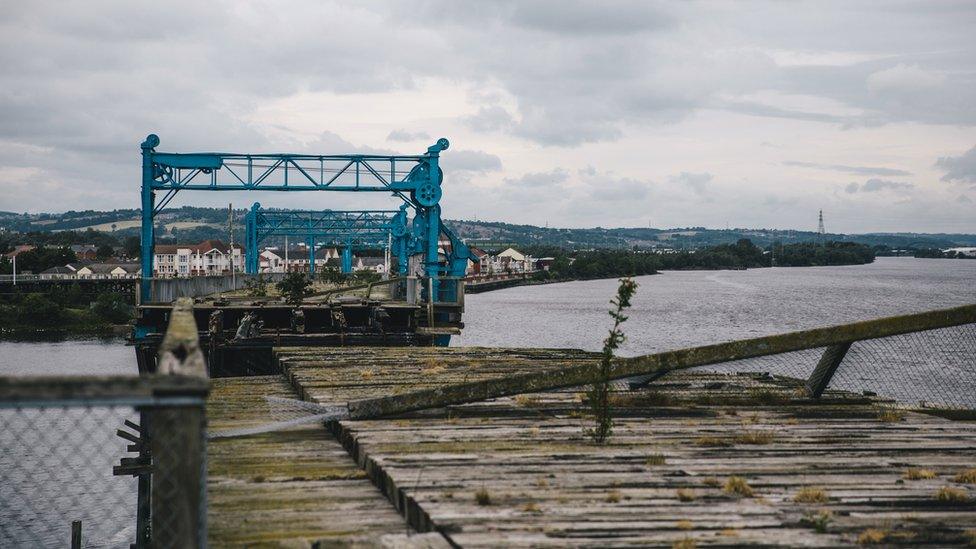
Photography by Caroline Briggs
Related topics
- Published16 May 2020

- Published16 June 2016

- Published24 March 2015
